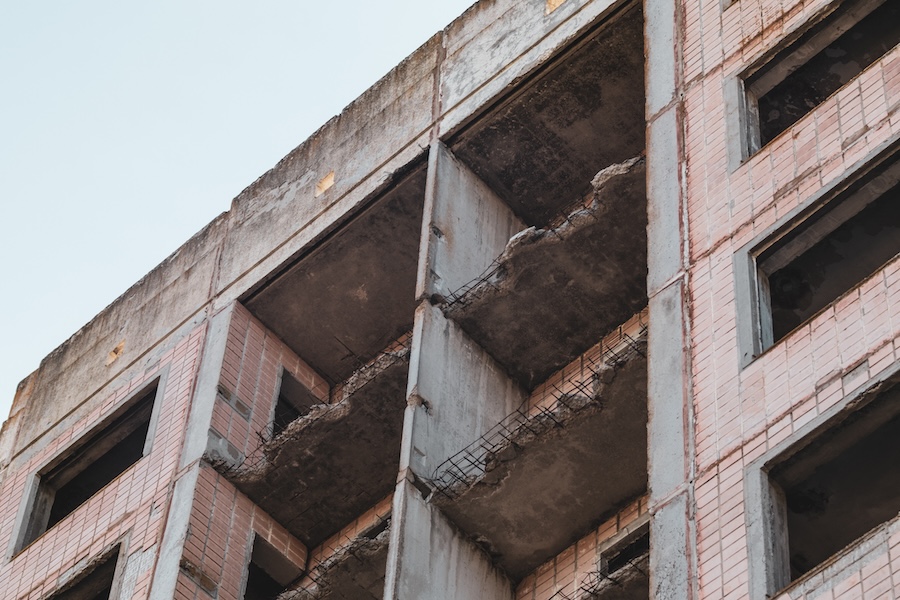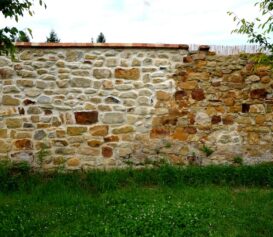The DOB announced new proposed rules for potentially structurally compromised buildings. Rules include procedures for notifying the Department, public safeguard measures, roles and responsibilities, and civil penalties.
Here’s what you can expect if these proposed rules are finalized:
Potentially Structurally Compromised Buildings
Based on the proposed rules, there aren’t significant changes to the definition of a potentially structurally compromised building:
A building or a structure that:
- has had an open roof for 60 days or longer;
- has been shored and braced or otherwise temporarily safeguarded pursuant to an emergency declaration issued by the commissioner pursuant to Article 215 of Title 28 of the Administrative Code, or due to concern for structural integrity as determined by a Registered Design Professional
- RDP concern and “otherwise temporarily safeguarded” are the main changes here, removing “repaired” from the definition
- has been subject to a precept as a compromised structure under Article 216 of Title 28 of the Administrative Code, or
- may have suffered structural damage by fire or by partial collapse of floors, interior or exterior walls or other cause as determined by the Commissioner.
Registered Design Professionals
A big definition outlined in the new rules is that of the Registered Design Professional, or RDP.
RDPs are frequently referenced in DOB-related rules, so they’re not an unfamiliar role for building teams. The definition of an RDP here is similar to other DOB rules: a Professional Engineer or Registered Architect as defined in existing code, and in good standing with relevant state and city agencies.
RDPs have several responsibilities when it comes to unsafe conditions:
If an inspection reveals an unsafe condition, the RDP must immediately notify the Department and the owner of the property. The RDP must identify the location of any unsafe condition, advise the owner on the appropriate protective measures to be taken, and include the recommended type and location of public protection in the notification to the Department. The owner of the building must immediately commence repairs or reinforcements and any other appropriate measures, such as cordoning off areas that may be dangerous, erecting fences, sidewalk sheds and safety netting, shoring, and bracing as may be required to secure the safety of the public and to make the compromised building structure and appurtenances safe.
For potentially structurally compromised buildings, the RDP has additional specific responsibilities:
- An RDP must conduct critical examinations and file reports in accordance with this section and Article 217 of Title 28 of the Administrative Code
- An RDP must maintain records of inspections and tests for at least six years and must make such records available to the Department upon request
- An RDP must maintain insurance coverage as set forth in paragraph (7) of subdivision (b) of section 101-07 of these rules. Copies of such insurance policies must be made available to the Department upon request
Required Examinations and Filings
Owners of potentially structurally compromised buildings must engage with RDPs to perform critical examinations. This includes initial inspections, periodic inspections (annual), and final reports. Reports have specific requirements, and must be filed within specific timeframes:
- Initial reports: Performed within 60 days from the date the structure becomes potentially compromised; filed within 30 days of the inspection.
- Annual/periodic reports: Submitted within a year of the submission date of the initial report, and every year thereafter until the final report.
- Final reports: Submitted when RDP can certify conditions in initial and/or annual reports have been repaired, and the structure is no longer structurally compromised
Civil Penalties
Penalties for requirements related to potentially structurally compromised buildings are outlined as follows:
- Failure to file initial report: $1,000/month (starting 90 days after the the building/structure becomes potentially compromised)
- Failure to file annual report: $1,000/month (starting 1 year after initial report is filed)
- Failure to file final report: $5,000/year (starting 2 years after the initial report is filed)
Penalties generally end upon filing of an acceptable report or the sign off date for a full demolition application for the structure. Penalties may also be challenged and waived or partially waived based on guidelines laid out in the rules.
Like any proposed rule, changes may be made based on results from the comment period. Click here to submit comments or attend the hearing, and stay tuned to the blog for updates once the rules are finalized.




